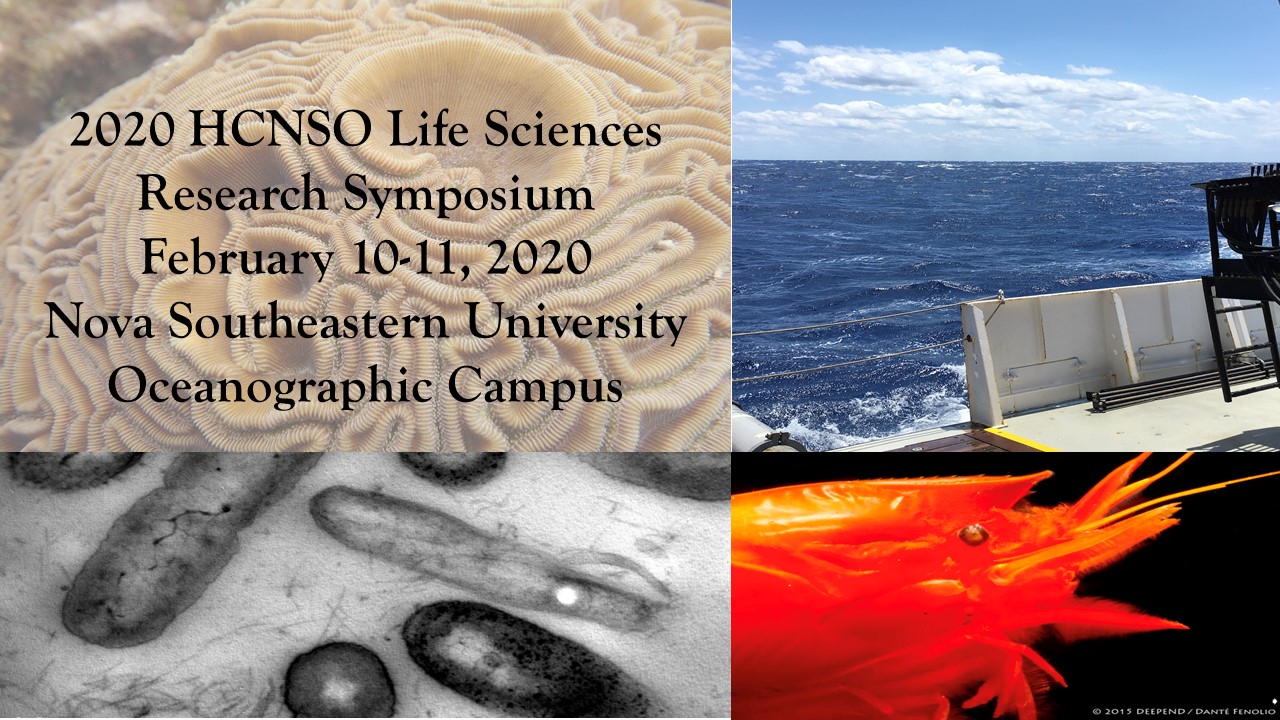Title
Coral-Symbiodiniaceae interaction networks for assessing broad patterns of differential bleaching-susceptibility
Location
HCNSO Guy Harvey Oceanographic Center Nova Southeastern University
Start
2-10-2020 2:00 PM
End
2-10-2020 2:15 PM
Type of Presentation
Oral Presentation
Abstract
Our current understanding of coral bleaching susceptibility to ocean heating, and its relationship to coral and Symbiodiniaceae species traits, is based on observations and experiments involving few species of either symbiont. The patterns that emerge from these assessments may be undetectable or reversed in experiments involving different species combinations, confounding efforts to discover broad patterns applicable to most, or a subset, of associations. This may be due, in part, to symbiotic and phylogenetic structure that underly the coral- Symbiodiniaceae symbioses that are rarely considered in analyses aimed at revealing the species traits correlated with bleaching susceptibility. Corals and their Symbiodiniaceae symbionts are imbedded in a complex interaction network that is structured by the potential and actualized frequencies of symbiotic interactions among partners, as well as their own evolutionary histories. Here we have reconstructed an interaction network of coral and Symbiodiniaceae symbioses for nearly 20% of extant reef-building corals and their associated 385 Symbiodiniaceae phylotypes as a framework for analysis of species-specific traits and their phylogenetically-corrected relationships to differential thermal bleaching response. This symbiotic network reveals expected and novel network modules that circumscribe subsets of associations that appear to build resistance to thermal bleaching using differing strategies. This tool is extensible to the remaining coral and Symbiodiniaceae species and can examine both novel emergent properties and test hypotheses based on the observations that frame our current understanding.
Coral-Symbiodiniaceae interaction networks for assessing broad patterns of differential bleaching-susceptibility
HCNSO Guy Harvey Oceanographic Center Nova Southeastern University
Our current understanding of coral bleaching susceptibility to ocean heating, and its relationship to coral and Symbiodiniaceae species traits, is based on observations and experiments involving few species of either symbiont. The patterns that emerge from these assessments may be undetectable or reversed in experiments involving different species combinations, confounding efforts to discover broad patterns applicable to most, or a subset, of associations. This may be due, in part, to symbiotic and phylogenetic structure that underly the coral- Symbiodiniaceae symbioses that are rarely considered in analyses aimed at revealing the species traits correlated with bleaching susceptibility. Corals and their Symbiodiniaceae symbionts are imbedded in a complex interaction network that is structured by the potential and actualized frequencies of symbiotic interactions among partners, as well as their own evolutionary histories. Here we have reconstructed an interaction network of coral and Symbiodiniaceae symbioses for nearly 20% of extant reef-building corals and their associated 385 Symbiodiniaceae phylotypes as a framework for analysis of species-specific traits and their phylogenetically-corrected relationships to differential thermal bleaching response. This symbiotic network reveals expected and novel network modules that circumscribe subsets of associations that appear to build resistance to thermal bleaching using differing strategies. This tool is extensible to the remaining coral and Symbiodiniaceae species and can examine both novel emergent properties and test hypotheses based on the observations that frame our current understanding.


